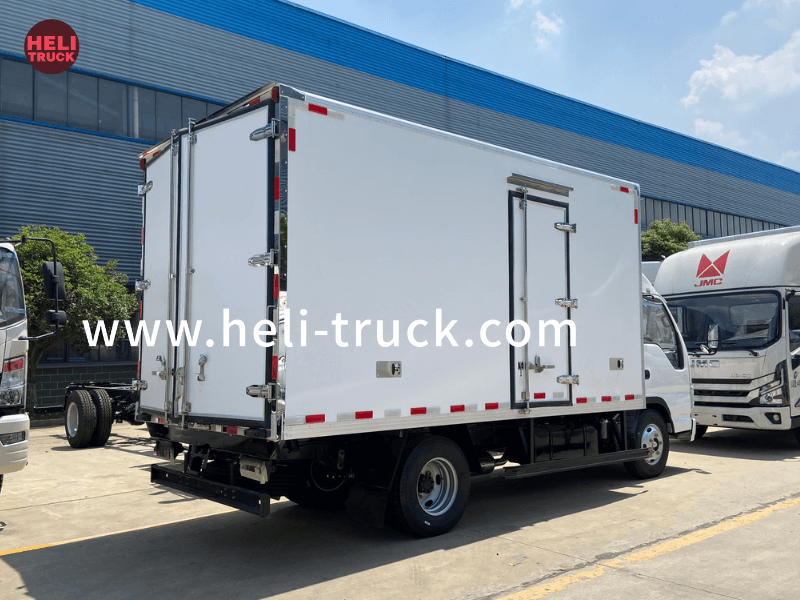Introduction
Garbage compactor trucks play a vital role in waste management systems, helping to collect, compact, and transport garbage efficiently. These specialized vehicles are equipped with various parts and components that work together to ensure the smooth operation of the compactor truck. In this comprehensive guide, we will delve into the anatomy of garbage compactor truck parts, exploring the functions of each component and the importance of proper maintenance to ensure optimal performance.
1. Chassis
The chassis is the foundation of the garbage compactor truck, providing structural support and carrying the weight of the entire vehicle and its contents. It is typically made of steel and designed to withstand heavy loads and rough terrain. The chassis also houses the engine, transmission, and other critical components of the compactor truck.
2. Compactor Body
The compactor body is the main container where the garbage is collected and compacted. It is usually made of high-strength steel to withstand the pressure exerted during the compaction process. The compactor body is equipped with hydraulic systems that control the compaction mechanism, including the compaction blade and the ejection system.
3. Compaction Blade
The compaction blade is a crucial part of the compactor body responsible for compressing the garbage into a dense, manageable form. water tank truck is powered by hydraulic cylinders that move the blade back and forth to compact the waste efficiently. The compaction blade plays a key role in reducing the volume of garbage, allowing more waste to be collected before the compactor truck needs to be emptied.

4. Ejection System
The ejection system is responsible for pushing the compacted waste out of the compactor body when it is full. It typically consists of a hydraulic ram that exerts pressure on the compacted garbage, forcing it out through the rear opening of the compactor body. The ejection system ensures that the waste is discharged safely and efficiently, ready for transport to the disposal site.
5. Hydraulic System
The hydraulic system is a critical component of the garbage compactor truck, providing the power needed to operate the compaction mechanism, ejection system, and other hydraulic functions. It consists of hydraulic pumps, cylinders, hoses, and valves that work together to control the flow of hydraulic fluid and generate the necessary force to move the various components of the compactor truck.
6. Rear Loader
Some garbage compactor trucks are equipped with a rear loader mechanism that allows waste collectors to load garbage into the compactor body from the rear of the vehicle. The rear loader typically consists of a hydraulic lift arm and a loading hopper that can be raised and lowered to facilitate the collection of garbage bins and bags. The rear loader enhances the efficiency and convenience of garbage collection operations.
7. Controls and Instrumentation
Garbage compactor trucks are equipped with a range of controls and instrumentation to monitor and manage the operation of the vehicle and its various systems. This includes control panels, gauges, indicators, and switches that allow the driver and operators to adjust settings, monitor performance, and troubleshoot issues as needed. Proper training in the use of these controls is essential for safe and effective operation of the compactor truck.
8. Safety Features
Safety is a top priority in waste management operations, and garbage compactor trucks are equipped with various safety features to protect the driver, operators, and other road users. These may include backup cameras, warning lights, alarms, and emergency stop buttons to prevent accidents and ensure the safe operation of the vehicle. Regular maintenance and inspection of these safety features are essential to ensure their proper functioning.
9. Maintenance and Service
Proper maintenance and servicing are crucial to keep garbage compactor trucks in optimal working condition and extend their operational lifespan. Regular inspections, lubrication, and replacement of worn-out parts are essential to prevent breakdowns and ensure reliable performance. Working with qualified technicians and using genuine replacement parts are key to maintaining the integrity and functionality of the compactor truck.
Conclusion
Garbage compactor trucks are essential tools in waste management systems, enabling the efficient collection and disposal of garbage. Understanding the anatomy of garbage compactor truck parts and the functions of each component is key to ensuring the smooth operation and longevity of these specialized vehicles. By implementing proper maintenance practices and investing in quality parts and servicing, waste management operators can maximize the performance and reliability of their compactor trucks, contributing to a cleaner and more sustainable environment.
